实验5:开源控制器实践——POX
实验5:开源控制器实践——POX
(一)基本要求
搭建下图所示SDN拓扑,协议使用Open Flow 1.0,控制器使用部署于本地的POX(默认监听6633端口)
sudo mn --topo=single,3 --mac --controller=remote,ip=127.0.0.1,port=6633 --switch ovsk,protocols=OpenFlow10
阅读Hub模块代码,使用 tcpdump 验证Hub模块
- h1 ping h2的tcpdump抓包结果
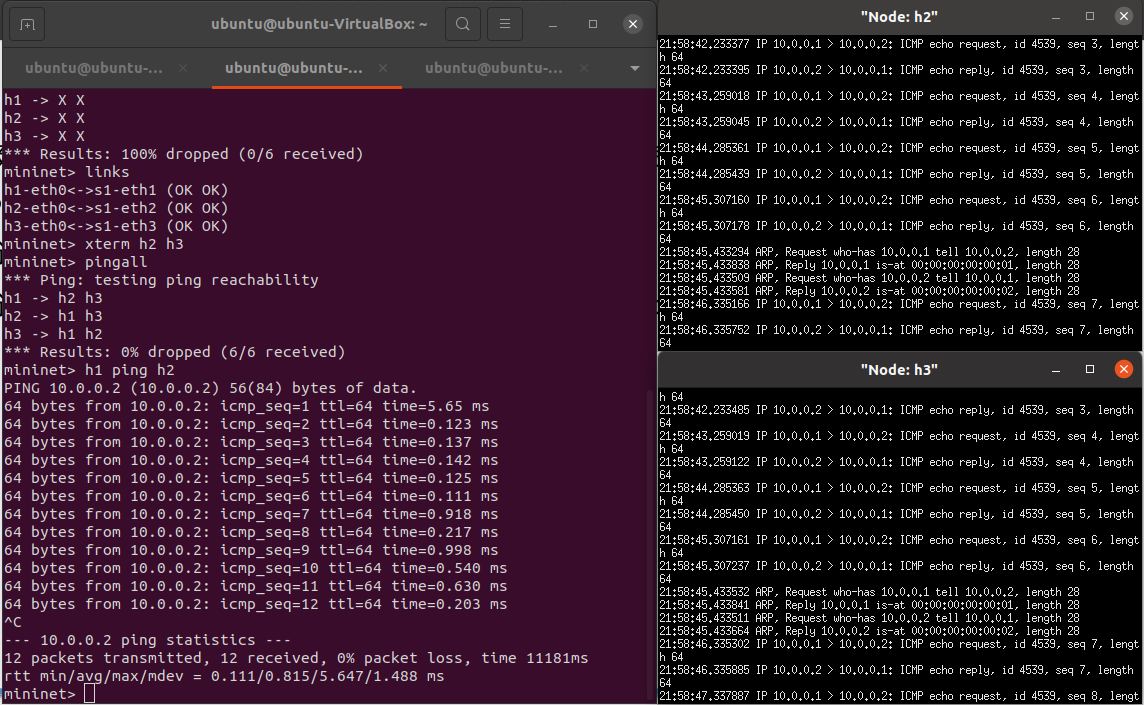
- h1 ping h3的tcpdump抓包结果
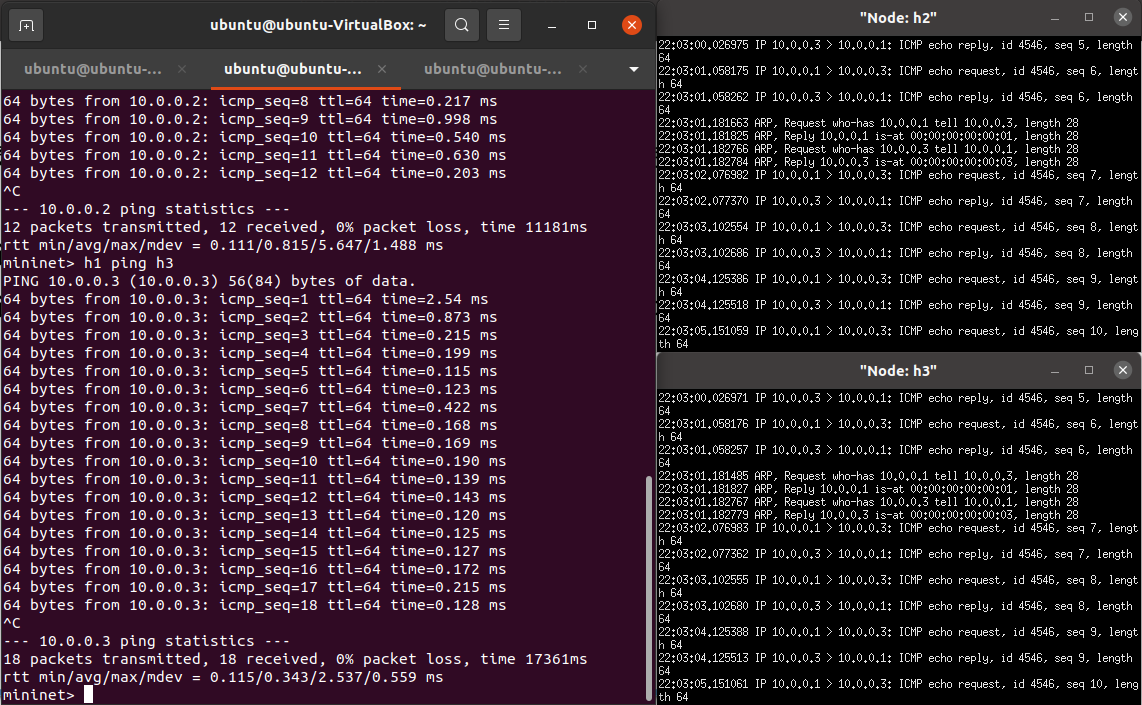
阅读L2_learning模块代码,画出程序流程图,使用 tcpdump 验证Switch模块
- L2_learning模块代码流程图
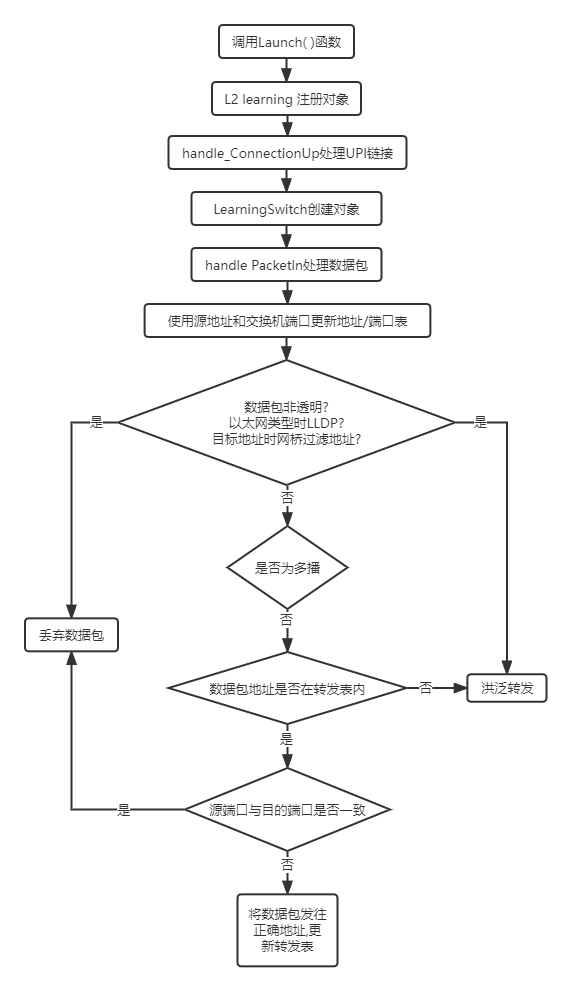
- h1 ping h2的tcpdump抓包结果
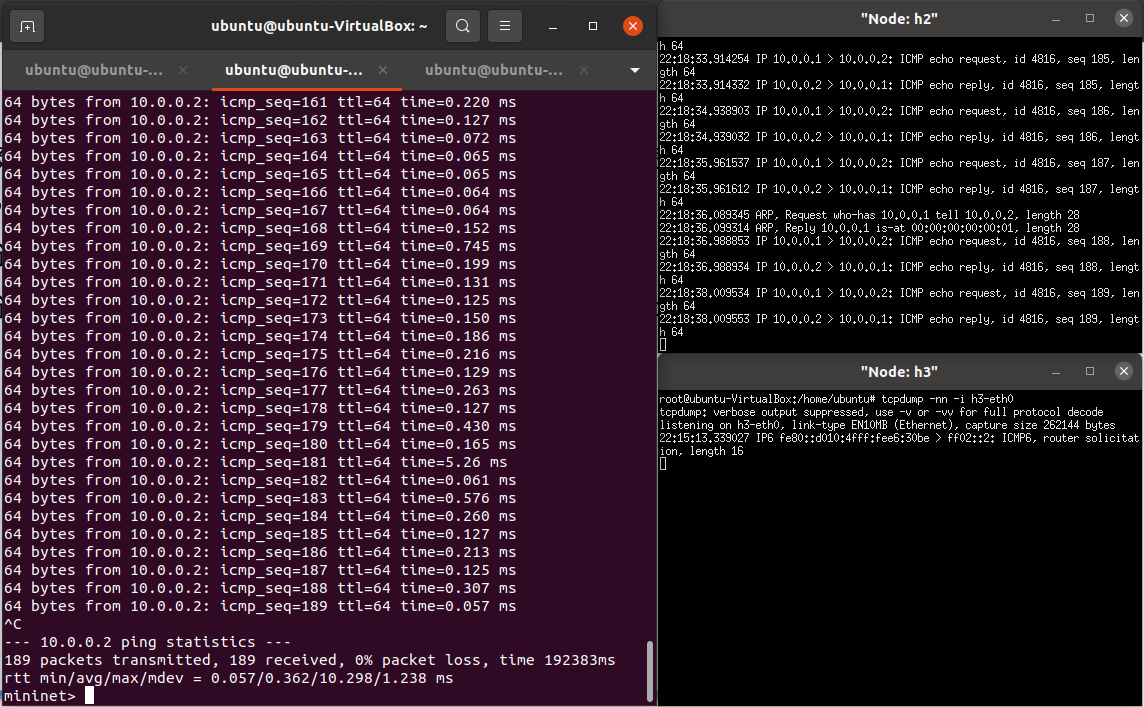
- h1 ping h3的tcpdump抓包结果

(二)进阶要求
- 重新搭建(一)的拓扑,此时交换机内无流表规则,拓扑内主机互不相通;编写Python程序自定义一个POX模块SendFlowInSingle3,并且将拓扑连接至SendFlowInSingle3(默认端口6633),实现向s1发送流表规则使得所有主机两两互通:
#----------SendFlowInSingle3模块------------#
from pox.core import core
import pox.openflow.libopenflow_01 as of
from pox.openflow.of_json import *
def SendFlowInSingle3(event):
msg = of.ofp_flow_mod()
msg.priority = 1
msg.match.in_port = 1
msg.actions.append(of.ofp_action_output(port=2))
msg.actions.append(of.ofp_action_output(port=3))
event.connection.send(msg)
msg = of.ofp_flow_mod()
msg.priority = 1
msg.match.in_port = 2
msg.actions.append(of.ofp_action_output(port=1))
msg.actions.append(of.ofp_action_output(port=3))
event.connection.send(msg)
msg = of.ofp_flow_mod()
msg.priority = 1
msg.match.in_port = 3
msg.actions.append(of.ofp_action_output(port=1))
msg.actions.append(of.ofp_action_output(port=2))
event.connection.send(msg)
def launch():
core.openflow.addListenerByName("ConnectionUp", SendFlowInSingle3);
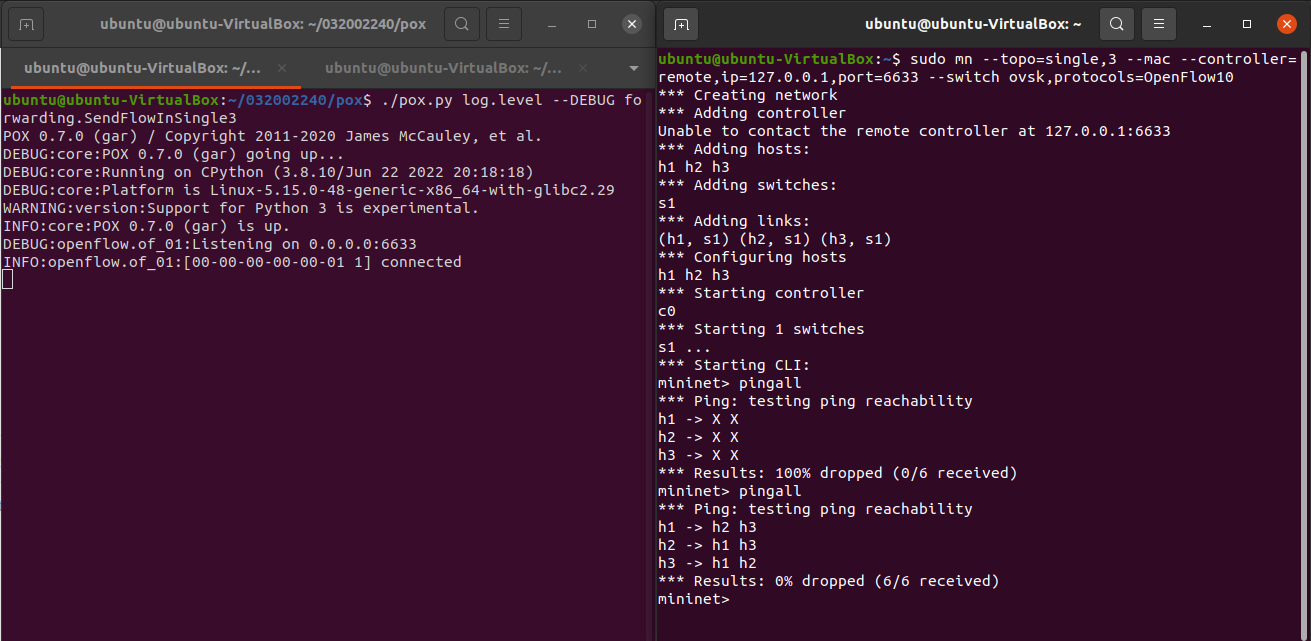
2.基于进阶1的代码,完成ODL实验的硬超时功能
from pox.core import core
import pox.openflow.libopenflow_01 as of
class SendFlowInSingle3(object):
def __init__(self):
core.openflow.addListeners(self)
def _handle_ConnectionUp(self, event):
msg = of.ofp_flow_mod()
msg.priority = 1
msg.match.in_port = 1
msg.actions.append(of.ofp_action_output(port=2))
# msg.actions.append(of.ofp_action_output(port=3))
event.connection.send(msg)
msg = of.ofp_flow_mod()
msg.priority = 1
msg.match.in_port = 2
msg.actions.append(of.ofp_action_output(port=1))
msg.actions.append(of.ofp_action_output(port=3))
event.connection.send(msg)
msg = of.ofp_flow_mod()
msg.priority = 1
msg.match.in_port = 3
# msg.actions.append(of.ofp_action_output(port=1))
msg.actions.append(of.ofp_action_output(port=2))
event.connection.send(msg)
def launch():
core.registerNew(SendFlowInSingle3)
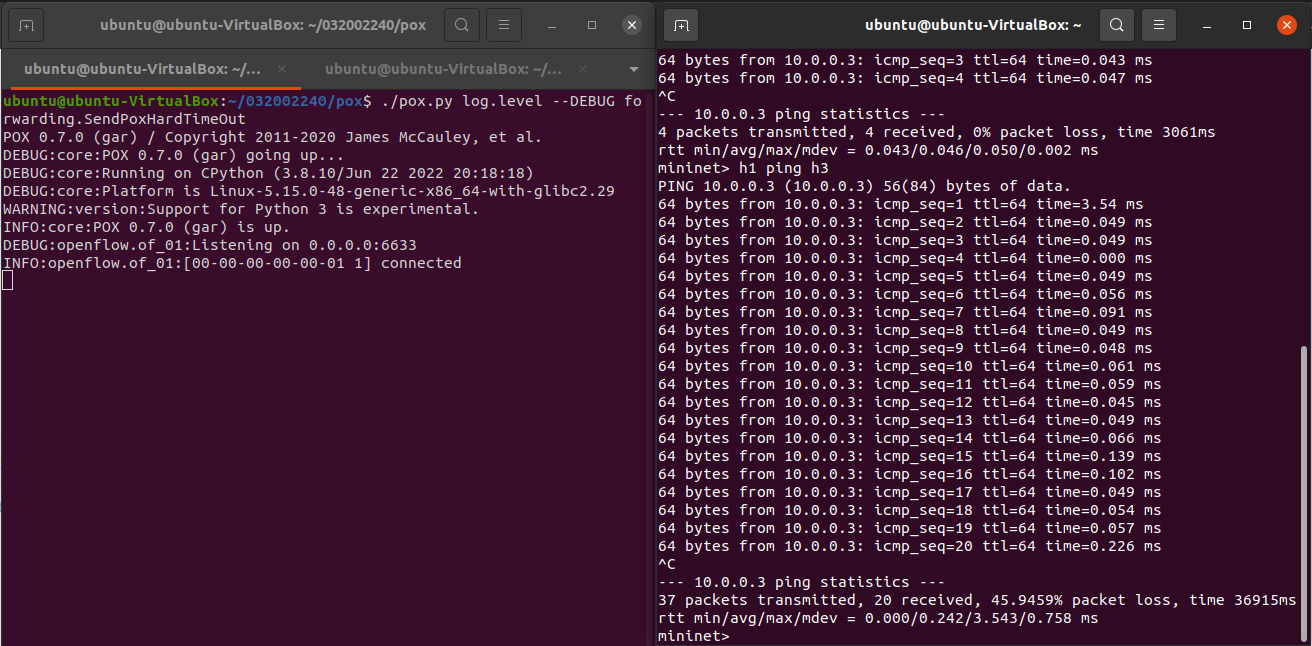
(三)个人总结
- 实验难度:
本次实验基础部分难度不高,进阶部分难度较大
-
遇到的困难及解决办法:
./pox.py log.level --DEBUG forwarding.SendFlowInSingle3无法运行- 解决方法:SendFlowInSingle3.py应该放在
/home/ubuntu/032002240/pox/pox/forwarding目录下
- 解决方法:SendFlowInSingle3.py应该放在
- 运行SendFlowInSingle3.py时发现6633端口被占用
- 解决方法:通过命令netstat -lntup | grep 6633查看后发现是上一次pox没有正常关闭的原因,解决之后即可正常运行。
- 运行SendFlowInSingle3模块后,发现主机始终无法ping通
- 解决方法:是launch函数多写了一个缩进导致的,将改缩进删去后即可ping通
-
个人感想:
本次实验使我对POX控制器的工作原理和功能有了更深刻的影响印象,并进一步熟悉了流表,通过实践验证了POX的Hub和L2_learning模块的功能,通过实验也让我发现对POX的学习和使用还要进一步加强,挺多地方卡壳,花了很多时间。
此外进阶要求需要阅读POX使用指南,因为是全英文的让我印象深刻,在查询网上相关资料后才完成进阶模块的操作。我觉得最难的是画流程图,代码好长好长,读得人都傻了。




 浙公网安备 33010602011771号
浙公网安备 33010602011771号